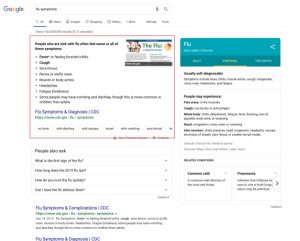
For high-performance organizations, there’s a strong link between employees who take ownership, having a culture of accountability, and having a high trust workplace. All three are critical to embed into the culture and values of an organization. Here are a couple key ways to accomplish this.
Let’s start with some definitions for “take ownership”, accountability, and trust in the workplace.
Take ownership – Taking ownership is about taking initiative. We take ownership when we believe that taking action is not someone else’s responsibility. You, as an individual, are accountable for the quality and timeliness of an outcome, even when you’re working with others. You care about the outcome the same way you would care as an owner of the organization. It doesn’t mean you have an obligation to own the project. It doesn’t mean you shouldn’t involve others. It does mean you have an obligation to the results of the organization and that you have an obligation to act on items that impact those results. Maybe you have a great idea for how to save the organization money, but it’s outside the scope of your role. Or perhaps it would take more time than you have. Or perhaps you don’t have the resources needed to complete the task or the fix resides elsewhere in the organization. In these situations, taking ownership means bringing your idea forward to someone who does have the time or resources to get it done.
Taking ownership tells others – “You can trust me to do the right thing.
Accountability – Being accountable is about being responsible for the result. Ownership is about initiative, accountability is about follow-through. It’s not just about the individual and their goals or commitments, it’s about acknowledging that your actions affect other team members’ abilities to accomplish their goals. When you say “I’ve got this”, accountability means you will deliver as promised, on-time, within budget, etc. It also means you’re forthcoming when you fall short. If you can’t deliver on time, or the results will not be as strong as you’d hoped, be honest and proactive with your communication. By being forthcoming, you respect the impact you have on teammates. Being accountable is a major factor in building trust.
Being accountable tells others – “You can trust me to do what I say I’m going to do.”
Trust in the workplace – Trust is confidence that your teammates are working towards the same objectives you are. That they’re doing this with diligence and professionalism. Another way to understand trust in the workplace is to look at what it’s not. Trust is the opposite of micromanaging. However, let’s not confuse clarity with micromanaging. Good communication and a shared understanding of objectives are critical. But beyond that, it’s important to trust that your teammates will do the right things and come back with results. Low trust translates to poor productivity. If you don’t trust your teammates, you spend time and energy following up and managing details you shouldn’t be. If you don’t feel trusted, you’re less likely to take initiative because you anticipate criticism for your approach.
Having trust in the workplace tells others – “I believe in you. I believe you’ll do the right thing and I believe you’ll do what you say you’re going to do.”
Ownership and accountability build trust. Trust encourages employees to take ownership. Trust reinforces accountability because when you’re trusted, you don’t want to let your team down.
Why taking ownership matters
According to the National Bureau of Economic Research, “…firms with employee ownership tend on average to match or exceed the performance of other similar firms.”
When employees take ownership of their work, they treat the business they are working for—and its money—as if it were their own. They will make decisions thoughtfully, responsibly, and with more care. They will also be more driven, motivated, and have more initiative, seeking creative and innovative ways to improve and develop what they are doing, rather than going through the motions and fulfilling the minimum, and worse still, stagnating.
In short, a company with employees who take ownership is a company that’s moving forward. It also creates a much more positive and fulfilling working environment for everyone, including managers.
Taking ownership and having ownership
One practice that’s on the rise is to motivate employees with stock and involvement in the company. It’s a way to motivate employees to take initiative that’s in the company’s best interest vs. looking only at what’s in their personal best interest (from an economic standpoint). It encourages employees to take initiative where they may otherwise not, and this of course is very close to what taking ownership is about. According to the National Bureau of Economic Research, more than one-fifth of U.S. private-sector employees (24 million workers) own stock in their own companies; and eight million participate in Employee Stock Ownership Plans (ESOPs). There may be an average 4 to 5 percent gain in productivity with introduction of an ESOP, but with a wide band of outcomes around that average.
Clearly define what success looks like
A key factor in encouraging employees to take ownership is establishing expectations and defining what success looks like. This means defining the end goal. What end result you want staff to achieve?However, do so without dictating everything they must do to reach it.
By focusing on the end goal, you are placing trust in your employees, and that trust empowers them. Trust is a key part of getting employees to take ownership of what they do so that they care about the outcome. Employees who are given responsibly are more likely to take responsibility.
So let your staff know clearly what end result you are seeking and give them the trust to work out how to get there.
Start with why
As much as possible, communicate why a person’s work is important. This is about you as the leader providing the guiding vision. People are more engaged in something they think is important. Understanding why something is important leads to people doing a better job. So provide your employees with a clear vision of why their work is important and where it fits in with the bigger picture. Understanding why allows an employee to fill in the gaps on objectives and take initiative or ownership of decisions or situations where there is ambiguity. Understanding why is like understanding “commander’s intent“.
When people know which way they are marching and why, they can march more confidently.
Micromanaging discourages ownership
Micromanaging and breathing down people’s necks is not the way. It creates resentment and stifles initiative, and makes people feel like they are just a cog in someone else’s wheel. Micromanaging creates a negative cycle where taking initiative is punished because how the task was completed, or the particulars of the result are criticized. It teaches employees that they should seek guidance and check-in often to ensure they are on the right track.
It’s hard to take ownership over someone else’s recipe/playbook when things are already too narrowly defined. Problem solving is fun, and creating some space for people to use other areas of their brain is more engaging than just executing orders.
So when assigning work, set the overarching parameters in a way that leaves enough space to give your staff room for decision-making, problem-solving, and creative thinking to achieve the outcome.
Listen
Ownership is a two-way street. Communication cannot all be one-way. If you want employees to take ownership of their work, then you must create an environment in which they feel free to express themselves openly and honestly, and share their ideas with you. As we defined earlier, ownership does not mean they will own the project, or that others won’t be included. But it does mean taking initiative to point out problems or opportunities. That type of initiative needs an outlet. So there is an accountability to listen to ideas and act on them. Doing so builds trust. They are the ones working on the front lines and are likely to have valid input. Generally speaking, the more ideas coming your way the better, and you can harness their ideas for a better outcome.
So listen to employees, and show them that their ideas matter, even if you may not apply them in every instance. This creates trust and mutual respect.
The outcome of a culture where employees take ownership
The most productive people and those most likely to succeed are those who are proactive about finding and solving problems, and comfortable acting with increasing autonomy and decreased oversight. In a world where problems are getting more complex, determined and innovative problem-solving will flow from those who live as if help is not coming. Living with responsibility can make us stronger and more action-oriented individuals.
Don’t confuse fault or responsibility with ownership
When an issue is caused by someone, or it’s someone’s responsibility to get something done – you want those people to have ownership of fixing the issue or making sure they get something done. However, it doesn’t mean that others can’t or shouldn’t also take ownership in helping someone fix and issues or taking responsibility for what happens. In team environments, ownership means problems are everyone else’s problem. This is especially true of leadership. This is best understood when you think of a leader taking ownership of results or mistakes within the organization even though he or she may not have had any direct involvement in the activities that caused the issue.
Have an outlet for taking ownership
One challenge can be finding the right place to send ideas. Taking ownership is straightforward when the problem or opportunity discovered aligns closely to the individual or team the individual is part of. However in a large, complex organization this may be difficult. The problem may reside far up the value chain, in a different functional area or a different physical place.
Idea software is an example of a tool and process that can facilitate this. There is one place to go to easily submit ideas and the software and processes take care of sharing, building on and routing the idea to those who can ultimately best evaluate and implement the idea.
Business & Finance Articles on Business 2 Community(200)
Report Post







